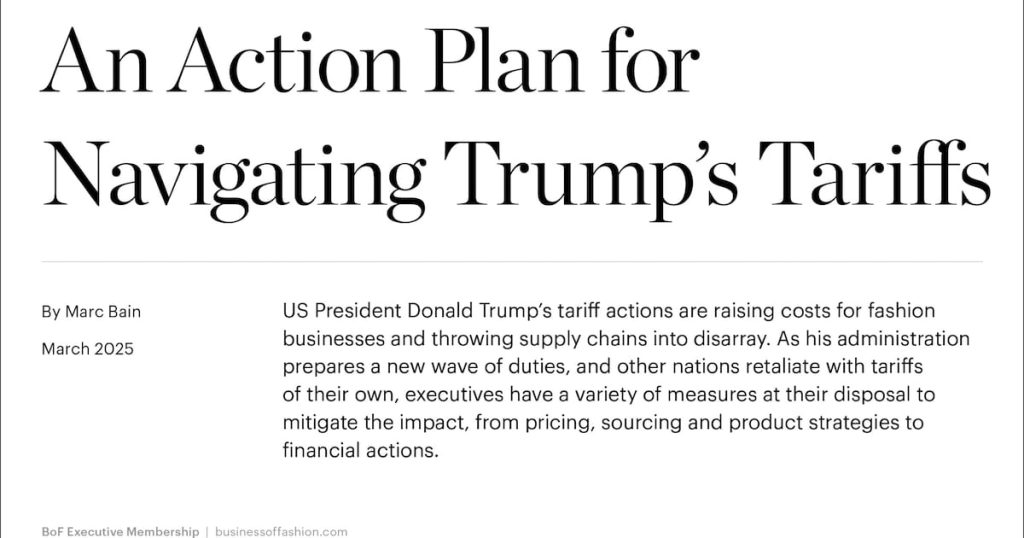
Donald Trump is erecting a wall around the world’s largest economy.
The US president has already implemented new tariffs on imports of goods from China — the biggest source of clothing and footwear sold in America — slapped duties on goods from neighbours Canada and Mexico, and has promised more to come. While there’s still a great deal of uncertainty about which countries will ultimately be targeted, how extensive the duties will be and how long they will remain in place, the likelihood is that tariffs — and the threat of new ones — will be part of the landscape of global trade for the foreseeable future. Countless fashion businesses will be impacted, with repercussions for their sales and earnings.
Fashion executives will need to act to protect their companies, both in the short-term, as they adjust to the immediate effects, and also for the long-term. Brands and retailers should prepare for a period of sustained volatility, meaning they will need a comprehensive strategy across the business to build flexibility and resilience.
In this memo to BoF’s Executive Members, learn more about:
- Trump’s likely targets for new tariffs in the fashion sector
- How fashion companies are adapting to the tariffs already announced
- The levers brands can pull within pricing, sourcing, product and finance to mitigate the impact








